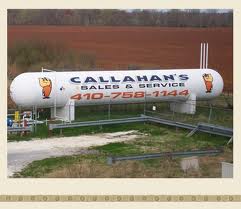http://forums.ebay.com/db2/topic/Business-Industrial/Crown-Capital-Management/5100123009
While propane is most commonly used for domestic, commercial and industrial heating applications, a shift is now on that could see this Liquefied Petroleum Gas, or LPG, play a bigger role in reducing the energy consumption of buildings.
Propane certainly has a lot of things going for it, especially in remote rural and outback locations unable to be connected to the main electricity grid.
It is also more energy efficient. The same NIFES study also showed that an oil boiler installed 15 years ago replaced with LPG can cut energy use by 11 per cent.
From a supply and performance perspective, LPG has also been demonstrated to be more reliable. One volume of liquid LPG will yield about 270 volumes of vapour. This enables high volumes to be stored on-site as liquid in pressurised containers. Also, because LPG is stored under pressure, it is difficult to illegally siphon off – a growing problem for oil storage tanks.
It boils at -42ºC at atmospheric pressure, which means that its performance is not affected by cold weather. This means it can provide a constant supply of gas throughout the year whatever the temperature.
Though highly flammable, it still has good safety credentials, at least from a pollution perspective.
Safety LPG is non-toxic and a leak of LPG vapour is unlikely to pose any significant ground or water pollution hazard. As a liquid, it is lighter than water so has the environmental benefit of always remaining above the water level. Any LPG spillages simply vaporise and do not cause soil or water contamination.
While propane is most commonly used for domestic, commercial and industrial heating applications, a shift is now on that could see this Liquefied Petroleum Gas, or LPG, play a bigger role in reducing the energy consumption of buildings.
Propane certainly has a lot of things going for it, especially in remote rural and outback locations unable to be connected to the main electricity grid.
It is also more energy efficient. The same NIFES study also showed that an oil boiler installed 15 years ago replaced with LPG can cut energy use by 11 per cent.
From a supply and performance perspective, LPG has also been demonstrated to be more reliable. One volume of liquid LPG will yield about 270 volumes of vapour. This enables high volumes to be stored on-site as liquid in pressurised containers. Also, because LPG is stored under pressure, it is difficult to illegally siphon off – a growing problem for oil storage tanks.
It boils at -42ºC at atmospheric pressure, which means that its performance is not affected by cold weather. This means it can provide a constant supply of gas throughout the year whatever the temperature.
Though highly flammable, it still has good safety credentials, at least from a pollution perspective.
Safety LPG is non-toxic and a leak of LPG vapour is unlikely to pose any significant ground or water pollution hazard. As a liquid, it is lighter than water so has the environmental benefit of always remaining above the water level. Any LPG spillages simply vaporise and do not cause soil or water contamination.

 RSS Feed
RSS Feed